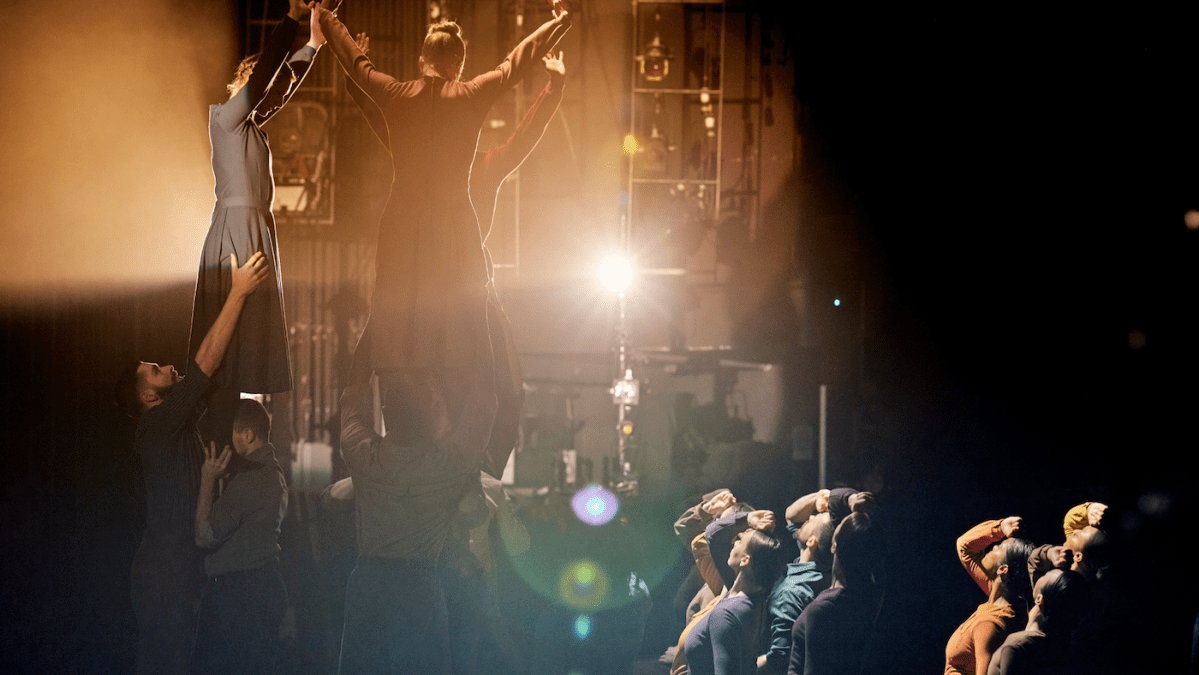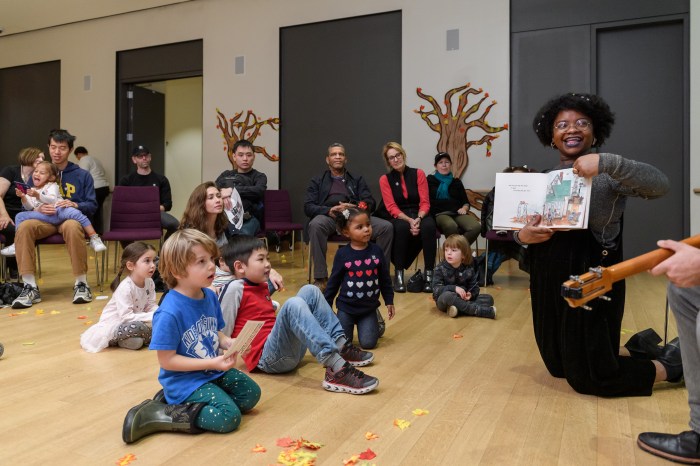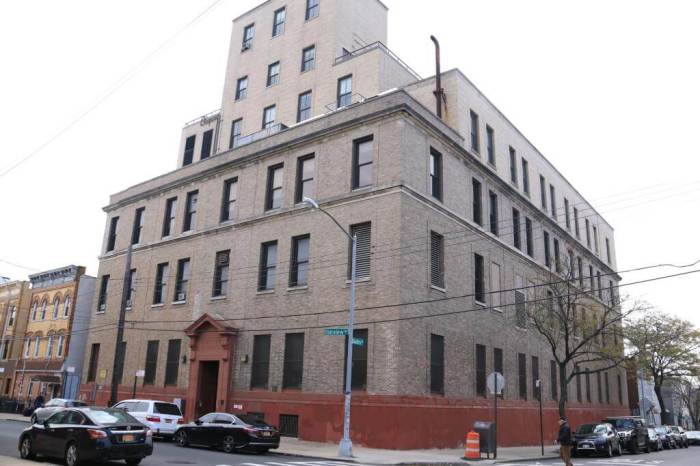
Limón Dance Company at The Joyce Theater

Limón Dance Company (LDC) appears at The Joyce Theater, 175 Eighth Avenue, NYC from Tuesday, November 5 to Sunday, November 10, 2024, with performances at 7:30pm on November 5, 6, 7, 8, and 9, and weekend matinee performances at 2pm on November 9 and 10. The performance on Tuesday, November 5 is a preview, with an opening night performance on Wednesday, November 6, and a curtain chat on Thursday, November 7 after the show. Tickets are now on sale at https://www.joyce.org/performances/132//limon-dance-company.
The Limón Dance Company celebrates its 78th season highlighting the formative experiences that shaped its founder’s approach to humanistic storytelling. Embodying the excellence of early modern dance, the program opens with Doris Humphrey’s captivating solo, Two Ecstatic Themes, followed by Limón’s masterful retelling of Gethsemane in The Traitor.
After a 45 year hiatus, Limón’s playful drumming quartet Scherzo returns to the stage alongside the monumental Missa Brevis, a poignant tribute to resilience amidst the ruins of war. Newly commissioned by the Limón Dance Company, a world premiere by award-winning choreographer Kayla Farrish enthralls with a reimagining of two lost Limón works. Costume design will be by Márion Talán de la Rosa and music will be composed by Farrish’s long-time collaborator Alex MacKinnon.
Two Ecstatic Themes
A choreographic masterpiece by Doris Humphrey, Two Ecstatic Themes embodies the excellence of early modern dance, delving deep into the human experience through movement. The dance, a solo in two parts, exemplifies Humphrey’s fascination with the richness of the Apollonian-Dionysian dichotomy. The sinking, spiraling movements of “Circular Descent” convey an emotional feeling of acquiescence, while “Pointed Ascent” shows the dancer’s aggressive achievement through sharp, angular movements. This solo work not only captivates viewers with its expressiveness but marks a turning point in Humphrey’s choreographic life, cementing her role as a prominent choreographer and theorist in the field.
Premiere date: 1931 – Washington Irving High School
Music: Nicholas Medtner, G. Francesco Malipiero
Two Ecstatic Themes by Doris Humphrey delves deep into the duality of the human experience, exploring the Apollonian-Dionysian dichotomy. Through the contrasting movements of “Circular Descent” and “Pointed Ascent,” Humphrey captures the essence of acquiescence and achievement, making it a pivotal work in early modern dance.
The Traitor
One of modern dance’s most significant works of the 1950s, The Traitor was José Limón’s response to the McCarthy hearings and the climate of betrayal that haunted the arts and entertainment fields during this period. Against Gunther Schuller’s musical score of violence, passion, and tenderness, the tragedy of Judas and the theme of betrayal are eloquently portrayed. Created for eight men, the work will make its World Premiere featuring a mixed-gender cast. With wonderfully vibrant movement, lush musicality and haunting images, this relevant work illuminates how we betray ourselves and our beliefs, and what that can do to each of us.
Premiere date: 1954 – American Dance Festival
Music: Gunther Schuller
The Traitor offers a powerful reminder of the importance of maintaining one’s beliefs and values in the face of ideological conflicts. This premiere with mixed-gender casting not only reflects our commitment to inclusivity and diversity but also highlights the universality of these themes. “This season, we invite you to reflect on the significance of your civic duty. Voting is not just a right, but a responsibility, and by participating in the democratic process, we can all contribute to shaping a more inclusive and resilient society. Take this opportunity to make your voice heard in the upcoming elections and then join me for an evening of profound artistic expression” said Dante Puleio, Artistic Director, Limón Dance Company.
Scherzo
This energetic, athletic dance originally created for four men and a drum tossed between them is a compelling exploration of rhythm and movement. In moments when the percussion score stops, the movement—the beats the dancers create on their bodies—becomes the music.
“A dance in three parts that began with a trio of men in a vigorous, athletic display of prowess; a solo with a male performer performing on a drum while dancing; a quartet of men dancing with a drum while they leapt, spun, raced and tossed the drum about as if in a basketball game.” Walter Terry, NY Times
Premiere date: 1955 – American Dance Festival
Music: Hazel Johnson
Kayla Farrish Project (November 2024 Premiere)
A new creation by Bessie Awardee Kayla Farrish that examines two thematically aligned works by José Limón. Redes (Nets) (1951) is a representation of collective work and unity, and El Grito (The Scream) (1952) is an awakening of consciousness. Farrish is a powerful new voice in the field. Her multi-disciplinary work has been recognized by Sundance, the New York Times, and the Harkness Promise Award. With roots as an African American woman from the south, Farrish’s work is deeply connected to the displacement of colored bodies and a continuous seeking for identity and community – themes Limón was exploring 70+ years ago. Farrish’s commission speaks to this conversation, using archival photos and writings to examine these two lost Limón works which explored his identity as an artist of color. Her new work comments on these themes and shares her perspective on a community working in unity towards freedom and awakening the collective consciousness – creating a conversation between Limón and Farrish, connecting the past and the future
Co-commissioning support from American Dance Festival and early residency support provided by Vanderbilt University Blair School of Music, and Kaatsbaan Cultural Park.
Missa Brevis
José Limón’s ‘Symphonic’ Masterpiece is a celebration of the human spirit. Inspired by the fortitude and resilience of the Polish people following the devastation of WWII, Limón was impressed by their willingness to forgive those who had tried to bury them. It is a monumental tribute to resilience in the aftermath of war, showcasing the strength and spirit of the human condition. This piece stands as a testament to endurance and hope amidst destruction.
The 2024 reconstruction celebrates the 65th Anniversary of Missa Brevis, with Reconstructors Kathryn Alter and Kurt Douglas in collaboration and includes a remastered recording of Zoltan Kodály’s “Missa Brevis en Tempore Belli” (“Short Mass in Time of War”).
“Missa Brevis, the all-too-relevant centerpiece, where this classic modern dance troupe reaffirmed its founder’s deep commitment to humanity and peace. Few images in dance are as stirring and meaningful as the scene in Missa Brevis in which the huddled mass of dancers sink down, clasping hands, their faces lifted to the sky.” Robert Johnson, NJArts 2024
Premiere date: 1958 The Juilliard School
Music: Zoltán Kodály
ABOUT THE ARTISTS
A widely respected former member of the Limón Dance Company for more than a decade, ADANTE PULEIO is the sixth Artistic Director in the Company’s 78-year history, a position that originated with Doris Humphrey. After a diverse performing career with the Limón Dance Company, touring national and international musical theatre productions, television and film, he received his MFA from University of California, Irvine. His research focuses on contextualizing mid 20th century dance for the contemporary artist and audience. He is committed to implementing that research by celebrating José Limón’s historical legacy and reimagining his intention and vision to reflect the rapidly shifting 21st century landscape.
JOSÉ LIMÓN (Founder/Choreographer, 1908-1972) electrified the world with his dynamic masculine dancing and dramatic choreography. One of the 20th century’s most important and influential dance makers, he spent his career pioneering a new art form and fighting for its recognition. Born in Culiacán, Mexico in 1908, he moved to California in 1915, and in 1928 came to New York where he saw his first dance program. Limón enrolled in Doris Humphrey and Charles Weidman’s dance school and performed in several of their works from 1930 to 1940. In 1946, with Doris Humphrey as Artistic Director, Limón formed his own company. Over the next 25 years, he established himself and his company as a major force of 20th century dance. Limón created a total of 74 works, including The Moor’s Pavane, Concerto Grosso, and Missa Brevis.
Founded in 1946 by José Limón and Doris Humphrey, the Limón Dance Company (LDC) has been at the vanguard of American Modern dance since its inception and is considered one of the world’s greatest dance companies. Choreographer and dancer José Limón is credited with creating one of the world’s most important and enduring dance legacies— an art form responsible for the creation, growth and support of modern dance in this country. Acclaimed for its dramatic expression, technical mastery and expansive, yet nuanced movement, the Limón Dance Company illustrates the timelessness of José Limón’s work and vision. The Company’s repertory, which includes classic works in addition to new commissions from contemporary choreographers, possesses an unparalleled breadth and creates unique experiences for audiences around the world. www.limon.nyc
The Joyce Theater Foundation (“The Joyce,” Executive Director, Linda Shelton), a non-profit organization, has proudly served the dance community for more than four decades. Under the direction of founders Cora Cahan and Eliot Feld, Ballet Tech Foundation acquired and renovated the Elgin Theater in Chelsea. Opening as The Joyce Theater in 1982, it was named in honor of Joyce Mertz, beloved daughter of LuEsther T. Mertz. It was LuEsther’s clear, undaunted vision and abundant generosity that made it imaginable and ultimately possible to build the theater. Ownership was secured by The Joyce in 2015. The theater is one of the only theaters built by dancers for dance and has provided an intimate and elegant home for over 475 U.S.-based and international companies. The Joyce has also expanded its reach beyond its Chelsea home through off-site presentations at venues ranging in scope from Lincoln Center’s David H. Koch Theater to Brooklyn’s Invisible Dog Art Center, and outdoor programming in spaces such as Hudson River Park. To further support the creation of new work, The Joyce maintains longstanding commissioning and residency programs. Local students and teachers (1st–12th grade) benefit from its school program, and family and adult audiences get closer to dance with access to artists. The Joyce’s annual season of about 48 weeks of dance includes over 300 performances for audiences of over 100,000.








